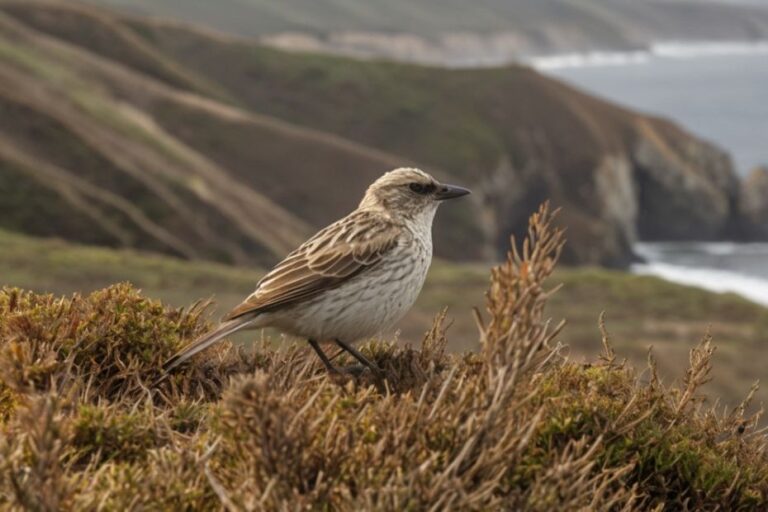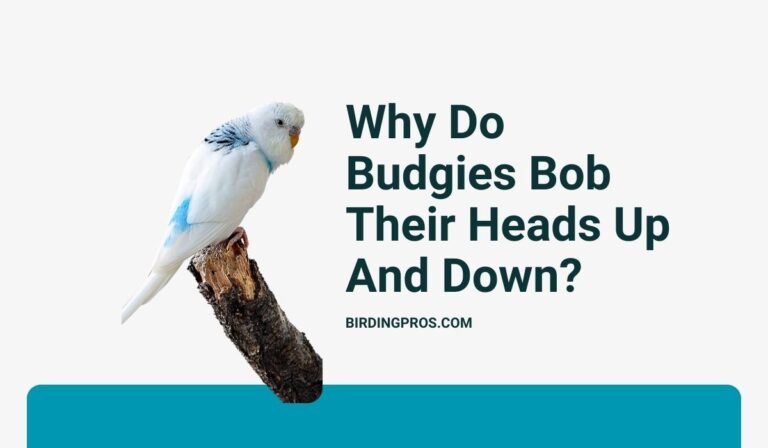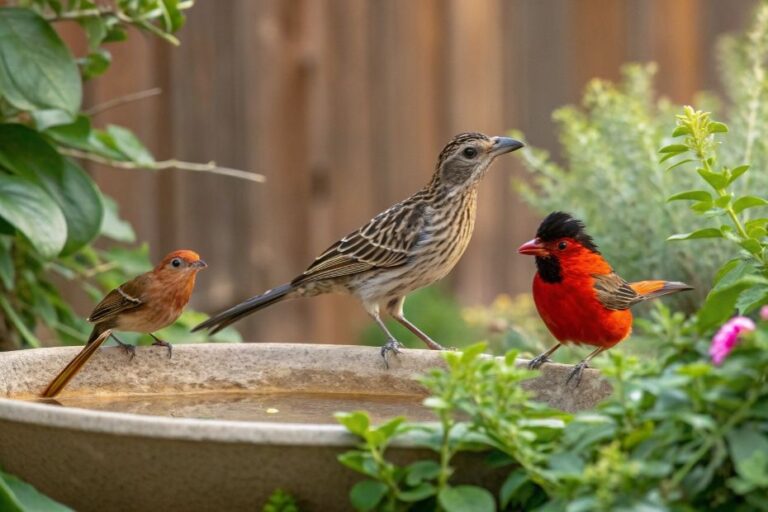How Do Birds Vocalize? List of Birds Who Vocalize Quickly
Birds use a specialized vocal organ called the syrinx to produce their sounds. Unlike human vocal cords, the syrinx is located at the junction of a bird’s trachea and bronchial tubes, allowing it to create a wide range of complex sounds. Let’s dig the answer for how do birds vocalize?
Some birds can even produce two different tones simultaneously by controlling each side of the syrinx independently.
Why do Birds vocalize? Birds vocalize for various reasons: to attract mates, establish territory, or communicate with their flock.
The sound they produce is influenced by the bird’s species, environment, and even the time of year (like during mating season).
Their songs and calls are an essential part of their survival and social interaction!
Table of Contents
How do birds talk without vocal chords?
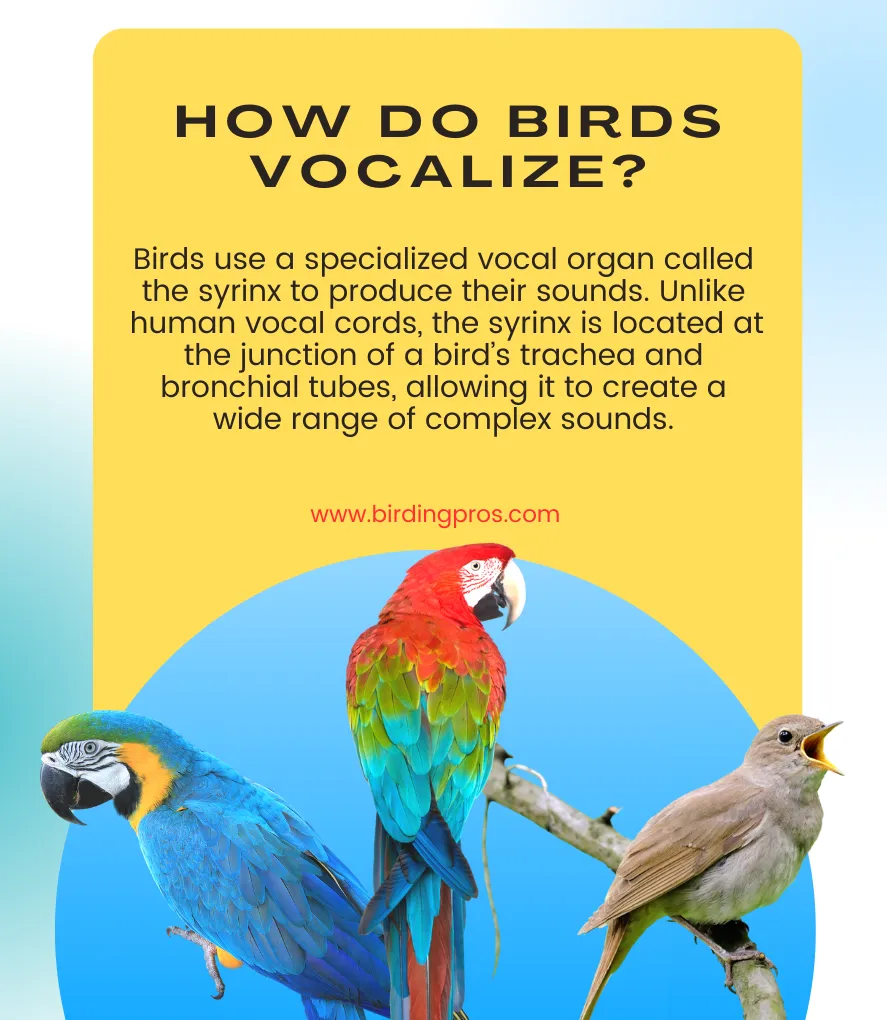
When we see a birds talking like a human the 1st thing come to mind that how do birds vocalize?The syrinx is located at the base of the trachea, where it branches into the lungs.
Unlike vocal cords that vibrate in humans, the syrinx produces sound by vibrating membranes as air flows through it, controlled by muscles.
What makes the syrinx so special is its efficiency and versatility. Birds can manipulate the tension and shape of the syrinx membranes, allowing them to create a wide range of sounds—everything from melodic songs to complex mimicry of other sounds.
Some species, like parrots, can imitate human speech by precisely controlling their syrinx, while others use it for communication, alarm calls, and territorial signals.
Read More: Food Guide for Backyard Birding
Scientific explanation of bird vocalization
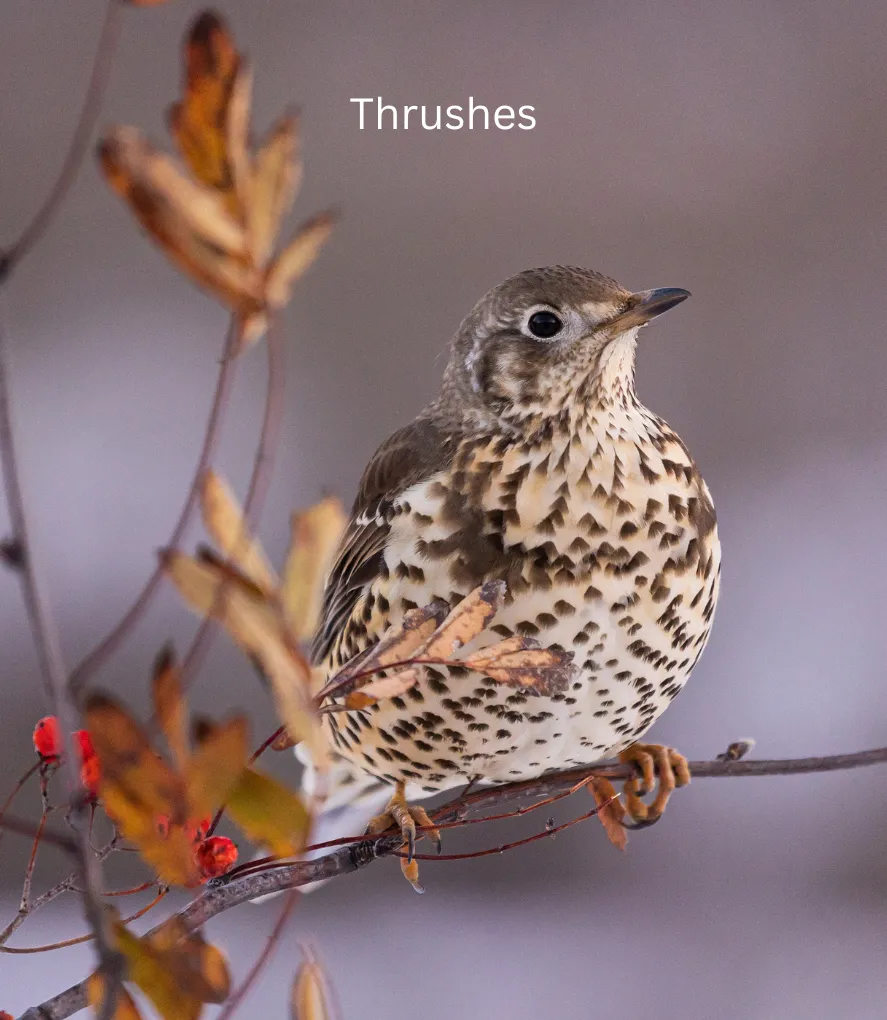
The syrinx is unique to birds and functions quite differently from human vocal cords.
Structure and Function of the Syrinx
The syrinx is made up of thin, flexible membranes called labia, which are controlled by muscles.
When air passes through the syrinx during respiration, the muscles adjust the tension and position of the labia, causing them to vibrate and produce sound.
The pitch and tone of the sound depend on the airflow, tension of the membranes, and the degree of muscular control.
Because of its location at the split between the two bronchial tubes, birds can control each side of the syrinx independently, allowing them to produce two different sounds at the same time—an ability called biphonation.
This dual control enables birds to create complex songs and even mimic sounds from their environment with great accuracy.
Mechanism of Sound Production
The sound is produced by air moving from the lungs through the trachea, causing the syrinx membranes to vibrate.
The rate of vibration and the modulation of airflow determine the frequency and amplitude of the sound.
Since birds have no vocal cords, their sound production relies entirely on this mechanical manipulation of airflow within the syrinx.
Evolutionary Adaptation
The syrinx’s efficiency allows birds to produce louder and more complex sounds than they would with vocal cords alone, which is critical for long-distance communication, especially in dense habitats like forests.
Evolutionarily, this organ has allowed birds to develop an extensive range of vocalizations, from simple calls to elaborate songs.
Read More: Pet Bird Food Guide: Pros and Cons
What kind of birds vocalize quickly?
| Bird Species | Characteristics |
|---|---|
| Wrens | Rapid, chattering songs with multiple notes in quick bursts |
| Warblers | Fast, high-pitched trills and sequences of notes |
| Thrushes | Complex, fast sequences of repeated phrases |
| Larks (Skylarks) | Continuous, rapid songs during flight |
| Finches & Canaries | Quick, warbling songs with many short, repeated notes |
| Budgerigars (Parrots) | Incredibly rapid and repetitive vocalizations |
| Mockingbirds | Rapidly mimic other bird sounds, switching quickly |
Some common question related to bird vocalization
How do birds talk without vocal cords?
Birds “talk” using a specialized organ called the syrinx. Located at the base of the trachea, the syrinx allows birds to produce sounds by vibrating membranes, controlled by muscles, without the need for vocal cords.
How do birds vocalize using the syrinx?
Birds vocalize by pushing air through the syrinx, where muscles adjust the tension of membranes. The vibrations of these membranes create sound, allowing birds to produce a wide range of vocalizations.
What are the names of birds that vocalize quickly?
Some birds that vocalize quickly include Wrens, Warblers, Thrushes, Skylarks, Canaries, and Mockingbirds.
Can Finches & Canaries vocalize?
Yes, Finches and Canaries are known for their quick, warbling songs, consisting of many short, repeated notes often used to communicate with mates or signal their territory.
Final Thoughts
In summary, the syrinx provides birds with an evolutionary advantage in sound production, enabling intricate vocalizations without the need for vocal cords.
Do you have some other news related to bird vocalization? If you have please don’t hesitate to share them with us via comment.



